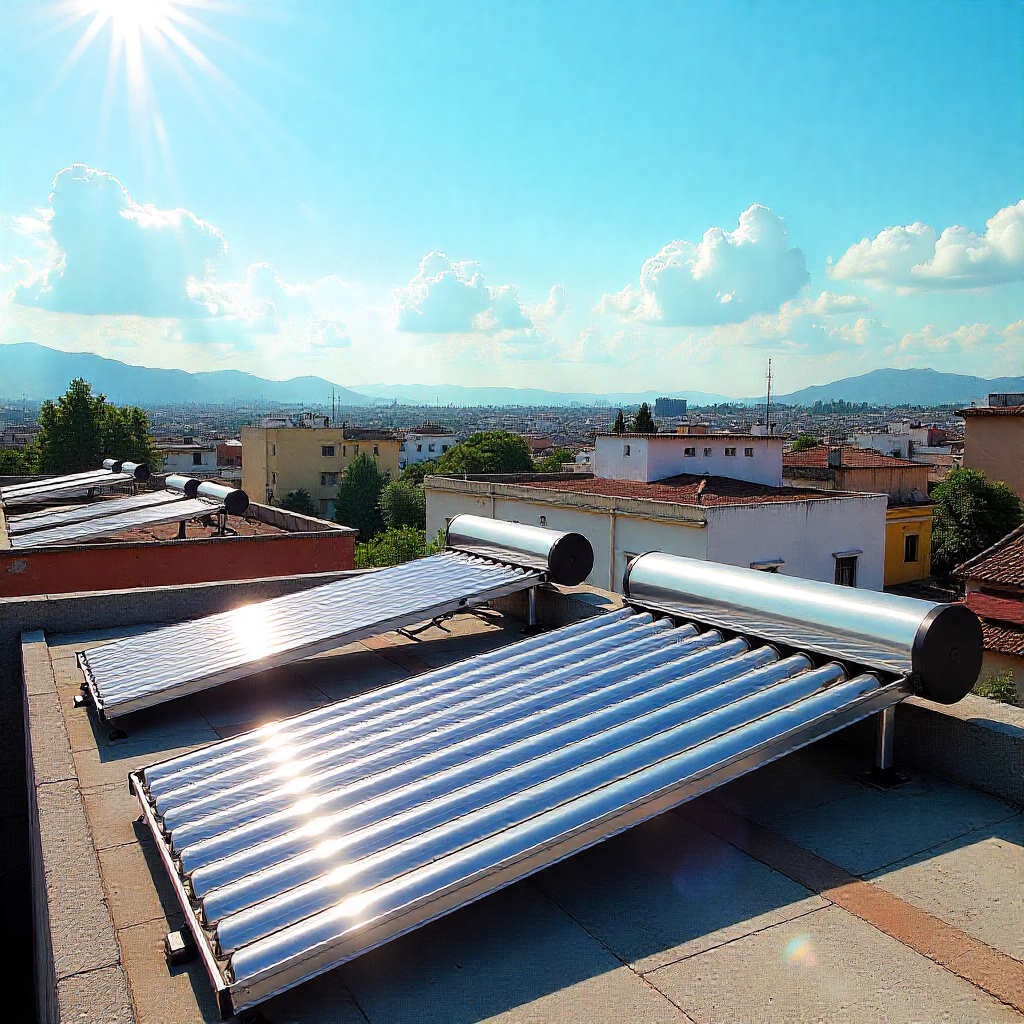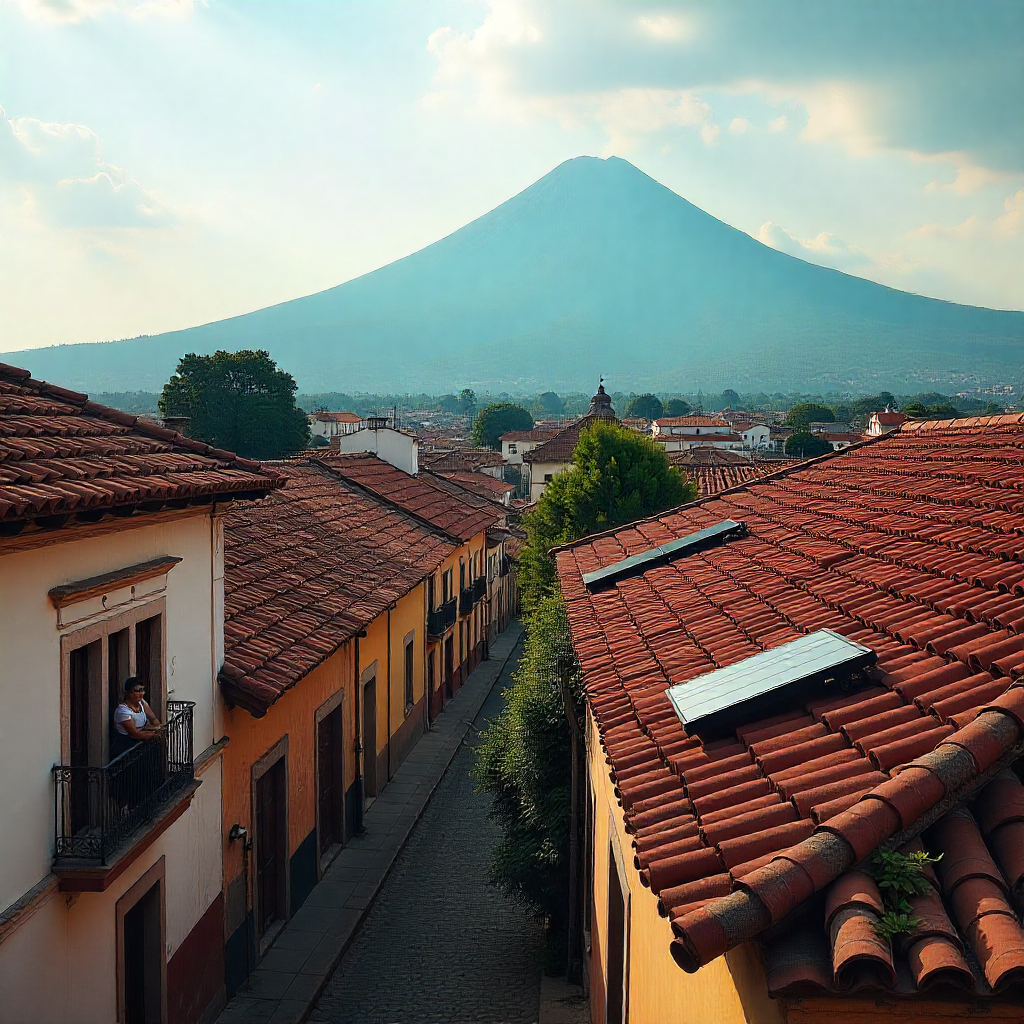Travelers exploring Guatemala’s diverse landscapes are increasingly spotting an unexpected feature dominating rooftops from colonial Antigua to the shores of Lake Atitlán. Solar water heaters, known locally as calentadores solares Guatemala, have become prominent visual elements across the country’s urban and rural areas. These installations capture the attention of visitors not merely as technological curiosities but as symbols of Guatemala’s commitment to sustainable energy solutions. The growing visibility of these systems reflects their widespread adoption and integration into everyday life, making them impossible for observant tourists to overlook.
Rooftop Transformations Catching Tourist Eyes
Guatemala City’s skyline now features thousands of solar thermal installations visible from hotel balconies and scenic viewpoints. In Zone 14 and Carretera a El Salvador, modern apartment complexes display rows of evacuated tube collectors gleaming under the intense tropical sun. Tourists photographing urban landscapes often capture these systems unintentionally, later questioning their purpose and prevalence. The density of calentadores solares Guatemala in metropolitan areas creates a distinctive architectural element that distinguishes Guatemalan cityscapes from other Central American capitals, sparking curiosity among international visitors.
Tourism Hotspots Showcase Solar Adoption
Popular tourist destinations have embraced solar water heating technology, making it highly visible to visitors. In Antigua Guatemala, UNESCO World Heritage site regulations encourage renewable energy integration, resulting in solar thermal systems appearing on boutique hotels, restaurants, and private homes. Lake Atitlán’s shoreline communities feature calentadores solares Guatemala on eco-lodges and family-run accommodations, where owners proudly explain their environmental benefits to guests. Even in the remote highlands around Quetzaltenango, travelers notice solar arrays on community centers and schools, demonstrating how this technology has permeated even less accessible areas.
Eco-Tourism Synergy Driving Visibility
Guatemala’s growing eco-tourism sector has accelerated solar thermal adoption in hospitality settings. Sustainable hotels actively promote their calentadores solares Guatemala as environmental features, offering tours of their renewable energy systems to interested guests. This educational approach transforms solar water heaters from background infrastructure into highlighted attractions. Properties like those found at report that guests specifically request rooms with views of solar installations, viewing them as authentic elements of Guatemala’s green tourism experience. This synergy between sustainable travel and renewable energy creates natural visibility for the technology.
Cultural Contrast Creating Visual Impact
The juxtaposition of traditional Guatemalan architecture with modern solar technology creates striking visual contrasts that capture tourist attention. Colonial buildings with terracotta roofs now sport sleek evacuated tube collectors, while rural thatched-roof homes incorporate simple thermosiphon systems. This blend of old and new represents Guatemala’s development path and resonates with travelers seeking authentic cultural experiences. Tourists frequently photograph these combinations, sharing images on social media with questions about the technology and its significance in Guatemalan society. The visual distinctiveness of calentadores solares Guatemala against traditional building materials makes them stand out in travel photography.
Economic Benefits Explained to Tourists
Hotel and restaurant owners frequently discuss their solar investments with curious guests, highlighting substantial operational cost savings. A boutique hotel owner in Panajachel reported reducing energy expenses by 70% after installing calentadores solares Guatemala, allowing reinvestment in guest experiences. Restaurant owners in Antigua explain how solar water heating enables them to maintain consistent food quality while minimizing environmental impact. These conversations provide tourists with concrete examples of sustainable business practices while increasing awareness of solar thermal technology’s practical benefits. The economic narrative resonates with travelers interested in responsible tourism and community development.
Technology Diversity Showcased in Tourism Settings
Tourists encounter various types of solar water heating systems during their travels, each adapted to specific settings. Luxury resorts feature sophisticated calentadores solares Guatemala with smart controls and remote monitoring capabilities. Rural community tourism projects utilize simpler thermosiphon systems designed for minimal maintenance. Coastal installations incorporate corrosion-resistant materials to withstand salt air exposure. This technological diversity demonstrates how Guatemala has adapted solar thermal solutions to different environments and economic contexts. Tourists interested in technology appreciate seeing these variations and understanding the engineering considerations behind each installation type.
Educational Tourism Components
Many Guatemalan tourism experiences now include educational components about renewable energy. Community tourism projects in the Western Highlands offer tours showcasing calentadores solares Guatemala alongside traditional crafts and agricultural practices. Some eco-lodges provide information sessions explaining how solar thermal technology works and its environmental benefits. These educational elements transform passive observation into active learning, helping tourists understand the significance of what they’re seeing. The inclusion of solar technology in cultural tourism experiences reflects its integration into Guatemala’s identity and development narrative.

Social Media Amplification
Tourists increasingly share images of Guatemala’s solar installations on social media platforms, amplifying their visibility globally. Instagram feeds featuring travel experiences often include shots of rooftop solar collectors against volcanic backdrops or colonial cityscapes. Travel bloggers specifically mention calentadores solares Guatemala in posts about sustainable tourism destinations. This organic social media coverage has created international awareness of Guatemala’s renewable energy adoption, attracting environmentally conscious travelers interested in seeing these innovations firsthand. The visual appeal of these systems against Guatemala’s stunning natural and architectural backdrops makes them highly shareable content.
Comparison with Home Countries
Many tourists notice Guatemala’s solar water heaters because they contrast sharply with energy infrastructure in their home countries. Visitors from North America and Europe, where solar thermal adoption remains limited, express surprise at the technology’s prevalence in Guatemala. Japanese tourists note similarities with Japan’s solar thermal leadership while appreciating Guatemala’s unique adaptations. These comparative observations lead to conversations about energy policy, climate conditions, and cultural attitudes toward renewable technology. The visibility of calentadores solares Guatemala prompts tourists to question why similar adoption hasn’t occurred in their own countries with greater resources.
Government Recognition and Promotion
Guatemala’s tourism authorities have begun promoting solar thermal adoption as part of the country’s sustainable tourism brand. The Guatemalan Tourism Institute highlights renewable energy initiatives in marketing materials, featuring images of calentadores solares Guatemala in eco-tourism promotions. Some tourism zones offer incentives for businesses installing solar systems, creating clusters of visible installations in popular destinations. This official recognition validates the technology’s importance to Guatemala’s tourism identity and ensures its continued visibility to visitors. Government promotion has transformed solar water heaters from background infrastructure into celebrated elements of the tourism experience.
Future Tourism Integration
The connection between solar thermal technology and Guatemalan tourism continues strengthening through innovative integration. New tourism developments incorporate solar thermal systems as design features rather than hidden infrastructure. Some hotels offer “solar tourism” packages including behind-the-scenes looks at their renewable energy systems. Community tourism projects plan to expand educational components about calentadores solares Guatemala as part of cultural experiences. This evolving relationship suggests that solar water heaters will become even more prominent in the tourist experience, transitioning from noticed objects to intentional attractions that showcase Guatemala’s commitment to sustainable development.
Conclusion
Tourists are noticing calentadores solares in Guatemala because these systems have become integral elements of the country’s physical and cultural landscape. Their visibility across diverse settings—from urban hotels to rural communities—reflects widespread adoption and integration into everyday life. The technology represents Guatemala’s practical approach to sustainable development, combining environmental responsibility with economic pragmatism. As tourists increasingly seek authentic experiences and responsible travel destinations, Guatemala’s solar thermal installations serve as visible symbols of the country’s commitment to renewable energy. This visibility not only educates visitors but also positions Guatemala as a leader in practical sustainable solutions within Central America and beyond.


